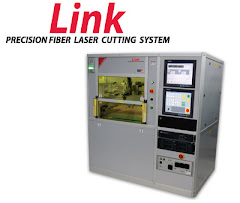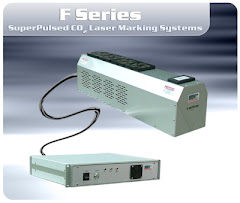When lasers were invented in 1960, they were called "a solution looking for a problem". Since then, they have become ubiquitous, finding utility in thousands of highly varied applications in every section of modern society, including consumer electronics, information technology, science, medicine, industry, law enforcement, entertainment, and the military.
Now with so many diverse industries using so many various applications, lasers have firmly rooted themselves as a necessary solution for new problems encountered. Today, end users have perhaps more choices than Einstein ever dreamed possible -- from laser types, to methods of processing, depths of cuts, marks and engravings, focal lens lengths, power settings, frequency, speed, number of passes and more.
Selecting the Right Laser System
Due to all the options available to end users, selecting the right laser for an application can be an arduous process and deciding to upgrade from a CO2 to a fiber laser system may bring even further challenges. Laser Photonics can help answer those tough questions and has provided our customers with a new tool to compare systems. Using the Cost Comparison Calculator found on the home page of http://www.laserphotonics.com/, customers can key in their location, the power of their CO2 laser and their typical daily use. The calculator will then reveal pertinent information such as: the tremendous cost savings, increased reliability, and enhanced beam quality and spot size of Laser Photonics Fiber Laser Systems. Users will quickly see what was once the top of the line CO2 laser system, and the best solution several years ago, now greatly pales in comparison to a new Laser Photonics Fiber Laser System.
SAMPLE COMPARISON
Let’s say your plant is in Florida and you currently are running a 1000w CO2 laser for 8 hours a day. Your electric power consumption with the CO2 laser is very high. Based on Florida’s average power cost of .1045 per kWh, that 8 hour daily shift, working 250 days per year, will cost you $7,942 in electric costs per year.
Then, consider your yearly maintenance of $45,000 and estimated assist gas consumables (6 l/h Nitrogen, 1 l/h Carbon Dioxide, 13 l/h Helium) at a cost of $11.67/h per year. That will add another $23,340 per year in costs.
Total cost to run your CO2 laser each year? A staggering $76,282.
Now, let’s take that same scenario, same run times and cost per hour figures and look at using a new Laser Photonics Fiber Laser System. The 1000W CO2 Laser System you’re currently using can be replaced with a 500W Fiber Laser System which has equal cutting quality and speed. With your new fiber laser, much less power is required for cutting reflective materials like aluminum or copper since more of the laser energy is absorbed by the substrate. This allows for intricate high-quality cutting at higher efficiencies than comparable laser cutting systems.
Your new fiber laser will have very low power consumption. Using the same sample data to compare -- your plant is based in Florida, running a 1000w Co2 laser, 8 hours a day for 250 days a year, the power costs will only be $1,359 per year. Remember, this is based on Florida’s average power cost of .0145 per kWh -- your states average power cost may be higher or lower.
Maintenance costs are easy to calculate for your new Laser Photonics Fiber Laser System -- $0. The fiber laser has no maintenance costs, no consumables and no cleaning of or alignment of mirrors for beam path is needed.
In the end, the yearly cost to run your new Laser Photonics Fiber Laser System? Just $1,359. That’s a savings of $74,924.
Now with so many diverse industries using so many various applications, lasers have firmly rooted themselves as a necessary solution for new problems encountered. Today, end users have perhaps more choices than Einstein ever dreamed possible -- from laser types, to methods of processing, depths of cuts, marks and engravings, focal lens lengths, power settings, frequency, speed, number of passes and more.
Selecting the Right Laser System
Due to all the options available to end users, selecting the right laser for an application can be an arduous process and deciding to upgrade from a CO2 to a fiber laser system may bring even further challenges. Laser Photonics can help answer those tough questions and has provided our customers with a new tool to compare systems. Using the Cost Comparison Calculator found on the home page of http://www.laserphotonics.com/, customers can key in their location, the power of their CO2 laser and their typical daily use. The calculator will then reveal pertinent information such as: the tremendous cost savings, increased reliability, and enhanced beam quality and spot size of Laser Photonics Fiber Laser Systems. Users will quickly see what was once the top of the line CO2 laser system, and the best solution several years ago, now greatly pales in comparison to a new Laser Photonics Fiber Laser System.
SAMPLE COMPARISON
Let’s say your plant is in Florida and you currently are running a 1000w CO2 laser for 8 hours a day. Your electric power consumption with the CO2 laser is very high. Based on Florida’s average power cost of .1045 per kWh, that 8 hour daily shift, working 250 days per year, will cost you $7,942 in electric costs per year.
Then, consider your yearly maintenance of $45,000 and estimated assist gas consumables (6 l/h Nitrogen, 1 l/h Carbon Dioxide, 13 l/h Helium) at a cost of $11.67/h per year. That will add another $23,340 per year in costs.
Total cost to run your CO2 laser each year? A staggering $76,282.
Now, let’s take that same scenario, same run times and cost per hour figures and look at using a new Laser Photonics Fiber Laser System. The 1000W CO2 Laser System you’re currently using can be replaced with a 500W Fiber Laser System which has equal cutting quality and speed. With your new fiber laser, much less power is required for cutting reflective materials like aluminum or copper since more of the laser energy is absorbed by the substrate. This allows for intricate high-quality cutting at higher efficiencies than comparable laser cutting systems.
Your new fiber laser will have very low power consumption. Using the same sample data to compare -- your plant is based in Florida, running a 1000w Co2 laser, 8 hours a day for 250 days a year, the power costs will only be $1,359 per year. Remember, this is based on Florida’s average power cost of .0145 per kWh -- your states average power cost may be higher or lower.
Maintenance costs are easy to calculate for your new Laser Photonics Fiber Laser System -- $0. The fiber laser has no maintenance costs, no consumables and no cleaning of or alignment of mirrors for beam path is needed.
In the end, the yearly cost to run your new Laser Photonics Fiber Laser System? Just $1,359. That’s a savings of $74,924.





.jpg)
Clr09_400px.jpg)





No comments:
Post a Comment